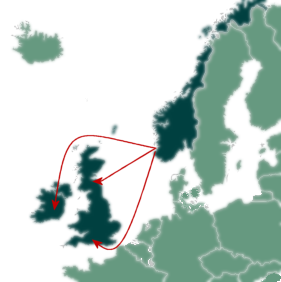
They founded Dublin, they founded York. They established the oldest still existing parliament in Europe, at the Isle of Man. And they brought the word law to the English language.
The first documented attack on the British Isles came at Lindisfarne in 793. This marks the beginning of the Viking era which ended – in the South at least – exactly when the Norman Conquest began, in 1066.
During these 273 years, Norway went from being an area where several little kingdoms were constantly at war with each other, to becoming a well organized Christian nation under one king.
Christianity came to Norway from England or rather from Wessex and Winchester. There is our first real connection apart from the odd Viking raid up river from Southampton.
Several Norwegian kings spent time in Winchester. Norway’s first king, Harald Fairhair sent his son Haakon to be fostered at the royal court here. He is forever known as Haakon Adelsteinsfostre.
Two other kings helped bring Christianity to Norway: King Olav Haraldson – who was later canonised – and king Olav Tryggvason. He gave people a choice: They could either be baptized or killed. But the christening of Norway was underway long before the kings made their mark on it.

The Stavanger area was the most important starting-place for Viking expeditions to the British isles. One look at a map will tell you why: it is the closest. And it was a rich area with great farms and many men. More imported artefacts like for example Irish metalworks has been found around Stavanger than anywhere else in Europe.